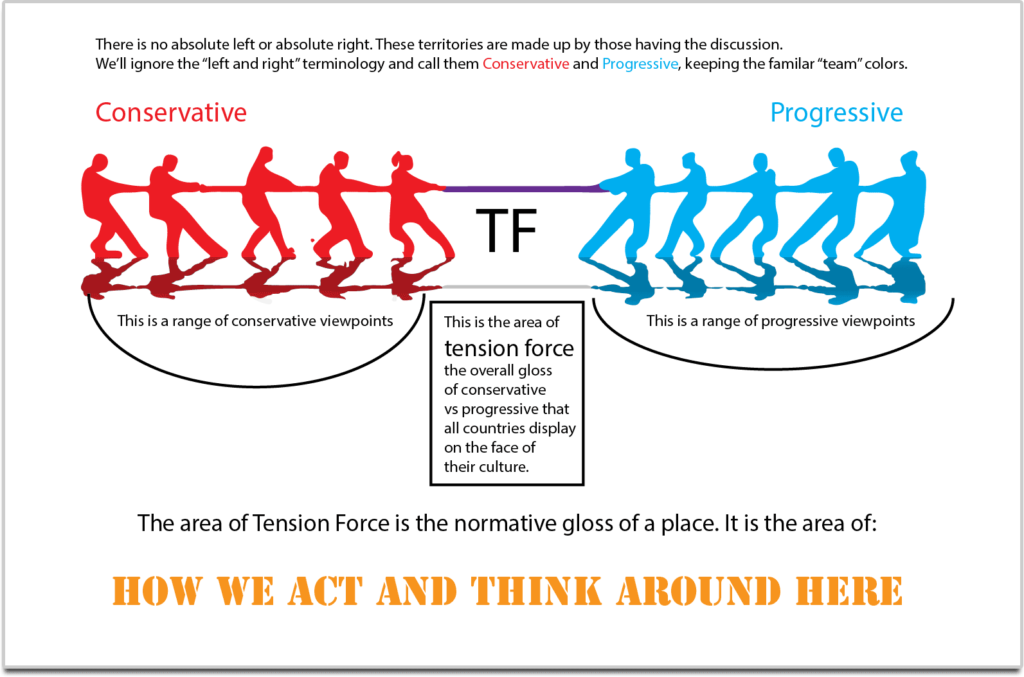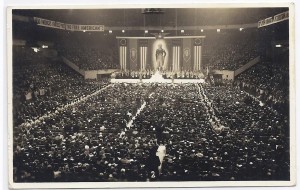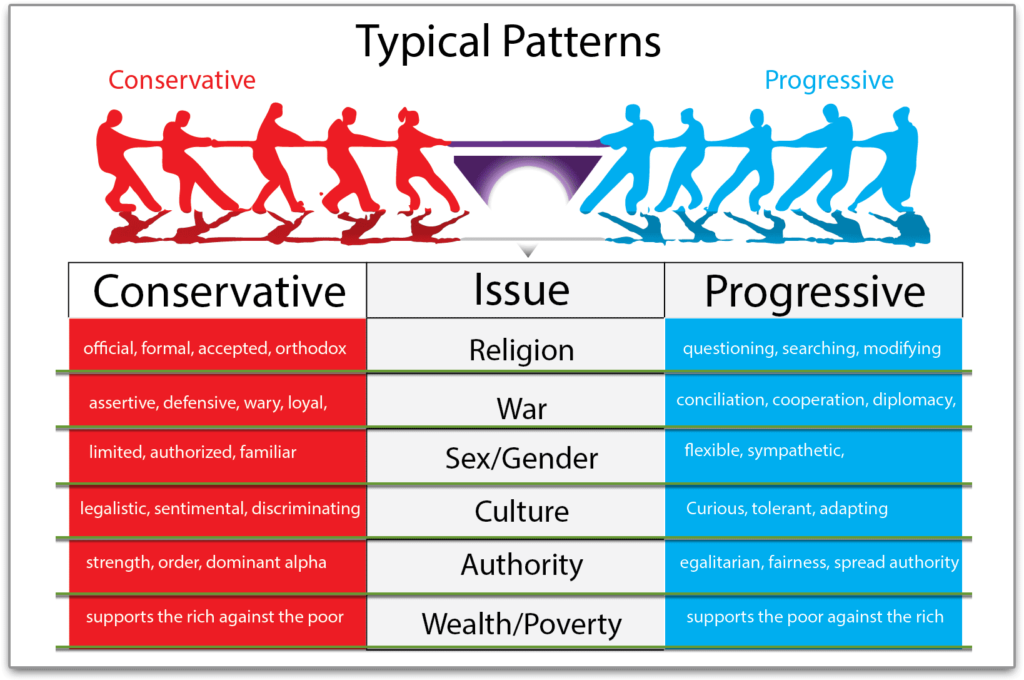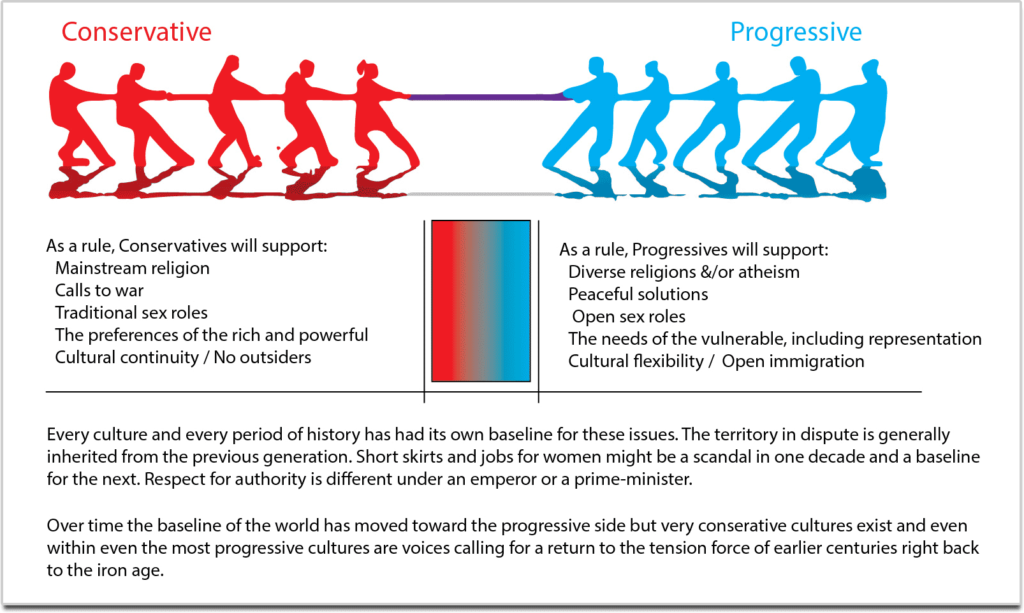Society
As usual, I’m thinking “out loud” here. I guess that means, awkwardly, and in public.
Anyone who is thoughtfully worried by Islam finds themselves in an awkward position. On one side are traditional right wingers who don’t like Muslims because they are outsiders and immigrants. This is just the usual “stranger danger” anti-immigration issue. This group is a range from people who are simply negative about it, to people who could easily be stirred up to violence. This is not a thoughtful and considered position. I want to wear a sign around my neck saying: “I’m not with these people”.
From the left one gets categorized as a racist for expressing fears about Islam. Considering the extreme side of the first group, you can see WHY liberals might go here. But this is also not a thoughtful or considered position. I believe liberals are guilty of being lazy here and choosing convenience and simplicity over a somewhat complex response.
(Just a disclaimer before going on here: Scientifically speaking, race does not exist, but I need to use the terms in play as they are meant by the people using them.)
Islam is no more a race than Christianity or Buddhism. How could it be? It’s funny but both left and right are over simplifying Islam into the same thing. Outsiders. The right is focused on barring those “unpleasantly different” folks and the left is standing up for them, wanting to give a warm welcome. You know, embrace diversity.
By “rounding down” Islam to a nickname for middle eastern people and conflating concerns about it to racism, liberals are engaging in convenient short term thinking. They may also be poisoning the argument in a way that works against their central values. “Islamophobia” as a word is a cork meant to be shoved into the mouths of anyone speaking out. Since Islam is not a race, but a religion this amounts to a war on free thought and speech. It becomes a thought crime to criticize it. And all of this done underneath the banner of letting people believe what they believe.
Minor Thought Experiment:
Liberals, imagine you live in Eugene, Oregon or some other solidly left wing community. Diversity is embraced, alt-lifestyles are accepted. Suddenly a very large stream of outsiders begin moving in, buying houses, starting businesses, running for school board, etc. Consider your response if they are:
- Mormons
- Scientologists
- Funded by the Koch brothers
- Jehovah’s Witnesses
- Randites
For simplicity, imagine all those groups mashed up into one. Imagine their name is “Surrender to the Power”. Imagine they believe overall:
- In sexual segregation and shame based clothing for women
- That a woman’s testimony is worth half that of a man
- That once someone has joined, death is the punishment for leaving
- That violence is an appropriate response to blasphemy
They aren’t ALL this strict but it’s generally true. Taken person by person they are all nice enough. But they are sending the message that women in this town seem immodest. And on the school board they want make the curriculum more in line with their beliefs. Don’t be a hypocritical dipshit here. You are going to be worried and upset. That’s because these are beliefs and values that starkly contrast with your own. Education, free speech and equal rights are all being diluted into a mix with the “Surrender to the Power” system. You would be upset because your philosophical system and values are being lost. Your children will grow up in a world less free and open than yours was.
I claim the right to criticize modes of thinking and behaving
“You’re going to Hell, but I’m not driving.”
There really isn’t an original thought here, sometimes I just have to say something when the ordinary world breaks my heart. 
America is experiencing a little glasnost toward marijuana use. It’s like a national version of how good it feels when you stop banging your head on the wall. Except of course for most of America where head banging is still the prefered choice. Let me use marijuana as the example standing in for the overall strategy against drugs. We know harm reduction is an approach that does less damage to society and costs less money than the “war on drugs” so why don’t we change and reap the benefits?
The answer is stupidity. There is a type of voter who is scared of other nationalities and has an enormous appetite for punishing wrongdoers. This voter is easy to manipulate by any politician who wants to play those cards. Marijuana was criminalized in 1933 by coloring it as a drug of foreign and lower class people. Mexicans and black Americans. It was said that they would become violent and lose control. Yes, it was the “All Mexicans are rapists” of its time. Continue reading
One of the best minds of the Roosevelt administration outlining fascism in a way that holds up scarily well.
The Danger of American Fascism
- Henry A. Wallace
- An article in the New York Times, April 9, 1944.
From Henry A. Wallace, Democracy Reborn (New York, 1944), edited by Russell Lord, p. 259.
- An article in the New York Times, April 9, 1944.
The Experiment:
- some recognizable “racial” traits?
- a leadership structure?
- a standard of beauty?
- a spiritual / religious framework? And some sort of representative (priest, shaman) role?
- stories they like to tell?
- music?
- unique styles of clothing?
- an attitude towards outsiders?
- some sort of roles for men and women?
- a story about death?
- richer and poorer? Or higher and lower caste?
- a warrior/defense group?
A sixteen minute video on the devastation caused by income inequality probably won’t excite anyone. But this is really clear, concise, even heartbreaking information about the damage it does. I’m not sharing it in a “Let’s all say the usual things” way but because it shocked me. It’s like a clear accounting of the cost.
Tension Force: Cohesion from Opposition
The tension force is the force that is transmitted through a string, rope, cable, or wire when it is pulled tight by forces acting from opposite ends. The tension force is directed along the length of the wire and pulls equally on the objects on the opposite ends of the wire. –Physics Classroom
Please imagine the totality of American politics as groups of people. Not just the official representatives, but all the voices contributing viewpoints from right-wing 1% super-PACs down to organic coop vegan hippies. Now assign all those people to one of two categories: Conservative or Progressive. Imagine the sum total of conservative opinion vs the sum total of progressive opinion as a tug of war. As they struggle against each other imagine the area between them vibrating with the force of their resistance.

That area is expressing the Tension Force of their opposition to each other. It describes the range of political reality for this community, in this time and place. The entire spectrum of opinion on the issues of the day are all in this area: Immigration, economic policy, male/female roles, war, etc. Now, imagine some quick snapshots of progressive and conservative forces in other countries contending against each other in the same way. Picture Sweden, Mexico, Russia, and Saudi Arabia. Each has their version of the spectrum of these opposing forces. Open societies have a broader spectrum than closed societies but every country has its own. The area of tension force (TF) contains the questions being struggled over and the possible policies that might result. Economic justice TF in Sweden and Mexico are wildly different. Sexual politics TF in America and Saudi Arabia also starkly contrast. TF = the local reality that is up for discussion and the current limits of that discussion. Progressive and Conservative are the internal states of the ones pulling the rope. Across these cultures, the range of viewpoints differs radically but the nature and motivation of those pulling the rope are the same throughout the human world.
No matter the specific issues of the moment, these forces are always present in varying but predictable amounts. Events befalling a community will temporarily affect the numbers of each but this settles after a time. This struggle is always there in every culture because these forces are the critical counterweights of every community. They hold up the tent by their opposition. Both groups are easy to predict and define.
It might look like I’m making a partisan political statement of good and bad here but I am not. This isn’t judging, it is about recognizing patterns. Progressives often wonder about the cognitive dissonance of American conservative Christians because logically Christians would support a peaceful “Love thy neighbor” approach rather than being in favor of any military action we take on. Likewise, that those who believe “what you did for the least of my brothers you did for me” would support a kind and generous attitude toward the poor rather than voting against every compassionate social program aimed at lessening the pain and dead ends of poverty.
Conservatives don’t think of themselves as warlike but as patriotic and happy to show it. They don’t think of themselves as harsh toward the poor, or helpful to the rich (though they are) rather, they say: “Nobody ever gave ME anything.” It just feels wrong inside them to be generous to the poor. For conservatives it isn’t what is written in the theology that matters, it’s being a member of whatever religion is the cultural bedrock. If America mostly worshiped Ba’al or Zoroaster (and if their parents did too,) conservatives would have bumper stickers reading: “Ba’al said it, I believe it, and that’s that.” or a little sticker of the holy fire, maybe with a family warming their hands over it. But in their outward behavior, they would express exactly the conservative attitudes they do now. It isn’t about thinking and deciding, it’s about playing your hardwired role.
Progressives have cognitive dissonances of their own. A progressive bumper sticker says: “If you can’t change your mind, how do you know you still have one?”. But if you ask that progressive to reconsider their viewpoints on pretty much anything, they are fixed and defensive. Flexibility and an open mind are guiding light values of progressives, but operationally they HAVE to have fixed points of view. Another Progressive cognitive dissonance is the near-sacred status granted to other people’s cultures, but not to their own. Progressives act like any show of a protective feeling towards their own culture is regressive and possibly even a hate crime, while protecting the expressions of other cultures as an absolute good. This is because progressives structurally counter xenophobia and anti-immigrant viewpoints. This isn’t about thinking and deciding, it’s about playing your hardwired role.
For conservatives AND progressives, the “Bullet Points of Reality” are not flexible or optional. Nor are these stances truly rational though we all think so in our own case. They can be expressed rationally but they are not chosen rationally. As your phenotype expresses eye and hair color, you also express your end of the political ball field. Your own political stance seems sensible because, OF COURSE, IT DOES. The opposition is stupid because, OF COURSE, THEY ARE. This is why “swaying the opposition with logic” is a fool’s errand. Your logic isn’t logical in that person’s body.
There are nice people sitting under both umbrellas. But if you explore ideas with them you’ll find very little flexibility about any core issues. You will not encounter many people who like a strong, dominant authority figure in charge but also support flexible modern sex roles and generous social programs. When you see someone from either side expressing one of their templated points of view you are seeing a single building block of the local TF, one pixel if you will. They DO come in different “strengths”, there are hard and soft versions for both sides and a Bell Curve distribution for all. Even people in the gentle middle of the road are structural elements of the tension force…just like everyone else. The middle of the road is never an objective location btw, it can only be defined as the center point between the outside edges, whatever they are, of current opinion. All of us add our weight to the scale of local and national politics.
Context Matters
A progressive in one age might suggest treating the slaves more gently but not suggest freeing them because that’s a hopelessly optimistic non-starter idea in her society. She might even feel that that much change would be rash. A conservative in another time might take freeing slaves for granted, but not give a hoot if they then live or die. The baseline shifts but the roles don’t. This is worth stopping to consider: Your specific beliefs about how things should be handled right now are not what makes you conservative or progressive, but rather your opposition to whatever the other side says about the issue. Conservative and progressive define each other with the context of the existing tension force. It isn’t the issue, it’s the attitude. In this way, the local reality is defined.
It’s clear that these types are a predictable part of human population dynamics because every human group generates them automatically. In early hunter-gatherer tribes, this tension force already existed as individual personality characteristics; some individuals were curious and open to strangers and some attacked them on sight. The resulting intrafamilial compromise handling the tension between these sides was important, it was like the surface tension of the tribe. It had to be open enough to let some things in and closed enough to keep some stuff out. The tribe is an organism and this behavior is its self-management as it relates to the outside world.
Tension force scales up and down automatically with population size. This coined idea of Political Tension Force isn’t a mystical power controlling us from outside, it is an emergent property of something we do naturally. As individuals, we show a range of open or closed responses to strangers and different cultures and behaviors, and political tension force is just the scaled-up expression of masses of people holding a similar range of instinctive opinions as a “hive mind”. These hive minds express the dominant traits constructed from the local tension force. In a simple, colorful way we could compare it to how defensive an insect hive is. Maybe North Korea is like killer bees and Canada is like calm honeybees.
Small towns and big cities naturally lean more conservative and more progressive by type as a logical outcome of caring for few or caring for many. Liberalism is about the problem of caring for many, conservatism is about the problem of caring for a few. In every generation, the same basic proportions of opponents are born. Is there some system maintaining the population density of the opposing sides? Whether there are sophisticated species-level algorithms controlling any of these functions I don’t know. This isn’t science, it’s mere observation, but it’s possible because our homeostasis includes many diverse human types delivered in the same consistent proportions, year after year.
I suspect conservatives will tend to be the slightly larger group because the forces driving human behavior are cautious and pro-survival by nature. Resistance to change is a braking system preserving the identity of the culture. A modest conservative majority keeps whatever structure has been accomplished here from suddenly destabilizing. Yet over time, successes have piled up on the progressive side in a way that starts to seem inevitable (if extremely gradual). Generally, conservatives are reasonably happy with these outcomes as long as they were born into that outcome, rather than watching a cultural transition to it. As deep as the entirely natural dislike is between progressives and conservatives, we absolutely need each other for our communities to maintain balance and integrity. One maintains, and the other reforms. This is a system for preserving our structure but opening it for editing out things that are too cruel or unjust or restrictive.
Chaos and collapse would quickly follow either side completely and absolutely empowered. Picture one team in the tug of war disappearing and leaving the other in complete control. The winners don’t stop pulling and enter a golden age of enlightened governance, instead, they begin to pull against themselves internally because that is all they have left. This mechanism of finding a difference and pulling against it is absolutely reflexive. In the natural course of seeking balance through opposition, they begin to tear into their own “flesh” in search of otherness. Neither can stop opposing because that is the mechanistic yet essential role they play. A lack of opposition is a state dangerously out of balance. It develops a cultural auto-immune disorder attacking its own healthy tissue. This unbalanced state is essentially what political correctness is for both sides: Deprived of healthy push back there is a spike of “purity madness” on the left and “loyalty madness” on the right that begins searching for enemies within. Blacklists, loyalty oaths, and purge trials do a good job of eventually stirring up some opposition. It’s grimly funny, but in doing so they ACTUALLY begin to create the opposing force needed to re-establish a kind of balance.
Today
Social media, purposefully, in order to sell ad space, separates us from each other so completely by our TF role that it generates an unbalanced runaway state like this within both groups. “Safely” sealed in our bubbles, each side scales up the rhetoric because they encounter no opposition to extreme views but will likely be punished for expressing more moderate views. The real problem is that these hard voices and positions are grown in us in this abstract half-real mono-culture of social media but are expressed towards our real neighbors in our real communities where we have to get along and get things done. The other side is as demonized as an enemy in war. Scorn and contempt for differences become automatic. This kills representative Democracy.
If we are such simpletons that we accept these hateful terms as a given that can’t be changed, we are doomed.
Accept the need for opposition and the sanity of the opposition even as you fight them. If their talk is so extreme that it leaves sanity as an unsettled issue, remember that opposition itself is the thing we need. Respecting the people voicing that opposition is the most effective way we have at this moment to cure the political autoimmune disorder induced in us by those who profit from our collapse.
That kind of respectful action will not come naturally to anyone right now unless they recognize the Yin/Yang essence of Tension Force. Consider sharing this mental model of how we work with others as a way to shape a paradigm of healthy conflict. Getting people to merely acknowledge this need for opposing beliefs improves us considerably. It makes people pause before setting fire to the house we all share out of bitterness and spite. We need a healthy political macro-biome and every one of us can play a part in achieving that.
© Hugh Miller Feb. 2016
Fade in:
Cut to:
- Extremely sharp spear points
- Long spears that let the holder stay well back from danger
- Throwing spears with atlatl, a flexible extension that gave the throw far more power and accuracy by using a snap motion just before release
- Bows and arrows
- Cutting and scraping tools for butchering
- Genotype: The genes present in an organism, potential or expressed.
- Phenotype: The genes the organism is expressing.
- Epigenetics: the turning on or off of gene expression via environmental events…”nurture”.
- Behavioral Epigenetics: The study of how these events in the environment trigger molecular biological changes in our brains. These include: social experience; nutrition; hormones; and toxicological exposures that occur prenatally, postnatally, and in adulthood.
A common example is the way that twins, born with basically identical phenotypes, vary as individuals in behavior, appearance and health. Nurture, experience and behavior drive the expression of different genes, leading to generally larger changes over the course of their lives.
The study of epigenetics is a tiny new branch off the tree of molecular biology and behavioral epigenetics is a bud on that branch. Yet it is already a vast and exciting field. Excitement and ferment in science can be measured partly by how many new questions are bubbling up in that area. Most experiments in this area are yielding more questions than answers but that in a sense describes how deep and rich a mine this is for scientists to explore. The field is seen as holding the potential to explain and perhaps even solve medical troubles, such as mental retardation, autism, schizophrenia, and neurodegenerative disorders, and even social issues, such as aging, addiction, suicide, child abuse, and child neglect.
Food for thought:
- This totally relates to my earlier post “Epigenetics changes everything” The idea that a fear could be passed epigenetically three generations forward with no reinforcement still absolutely boggles my mind. It hints at some of the complexity within this system.
- In relation to Darwinism – It doesn’t exactly invalidate Darwinism because at its root, Darwinism is a small group of simple truisms that explain very little. But it further reveals how much more elegant and sophisticated life is than explained in classical Darwinism. Not that Darwin himself can be faulted for not have more advanced knowledge. Interestingly, two of Darwin’s losing rivals for a theory of inheritance, Alfred Russell Wallace and Jean Baptiste Lamarck continue to be redeemed by our advancing knowledge. Wallace saw a potential for improving the lot of the poor through this knowledge and Lamarck believed the experiences of an organism could cause changes inherited by later generations. Darwin himself favored the idea of harsh competition as the driving force. The importance of Darwinism has always been drawing a hard line between nature and theology. The continued social disputes over Darwinism VS creationism just show how hard it is to make any intellectual advances culturally on hot button issues.
- If the experience of gruelling poverty causes measurable impact on children (and thus, their entire lives and descendents) couldn’t this be considered cultural child abuse or at least neglect?
- A related but separate issue. Darwin was personally a mild and retiring character but he was wealthy and privileged. In his own mind his theory was also a justification for rich vs poor, upper class vs lower class. EG: We are rich and well because because we are fitter. You are poor and sick because you are less fit. H.G. Wells sketched a nightmare projection of this into the future in his book: The Time Machine with the two branches of the human race, the Eloi (rich) and the Morlock (poor). Although Wells was a socialist, Darwin must have had a somewhat similar picture of the future except for him it would have been acceptable.
- I’d like to reference my earlier post “The Neuromechanics of Cruelty” for a number of examples of how Darwin was simply acting out the familiar human traits of rationalizing his privilege and seeing it as based on personal merit. As were all the harsher “social darwinists” who followed.

“A colony of honeybees is, then, far more than an aggregation of individuals, it is a composite being that functions as an integrated whole. Indeed, one can accurately think of a honeybee colony as a single living entity, weighing as much as 5 kilograms (10 pounds) and performing all of the basic physiological processes that support life: ingesting and digesting food, maintaining nutritional balance, circulating resources, exchanging respiratory gases, regulating water content, controlling body temperature, sensing the environment, deciding how to behave, and achieving locomotion.”
There is an idea gaining credibility that just as hives behave as individuals made up of the independently moving “cells”, that primate brains are almost like hives unto themselves…vast collectives of caste system individuals handling tasks that cumulatively produce the neurological reality experienced by the individual. This can’t be described as a final proven fact, but the model holds up, right down to the notion of specific cells that are needed being produced. algorithmically to changing needs. This extends to decision-making, which is the main subject of Honeybee Democracy. The bees exercise a collective intelligence that mimics not just small-group decision-making but the cognitive deliberations of our own brains:
“We will see that the 1.5 kilograms (3 pounds) of bees in a honeybee swarm, just like the 1.5 kilograms (3 pounds) of neurons in a human brain, achieve their collective wisdom by organizing themselves in such a way that even though each individual has limited information and limited intelligence, the group as a whole makes first-rate collective.”
Like many biologists, Seeley sees a bee colony as not just a collection of individuals but as a sort of super-organism. He continues:


